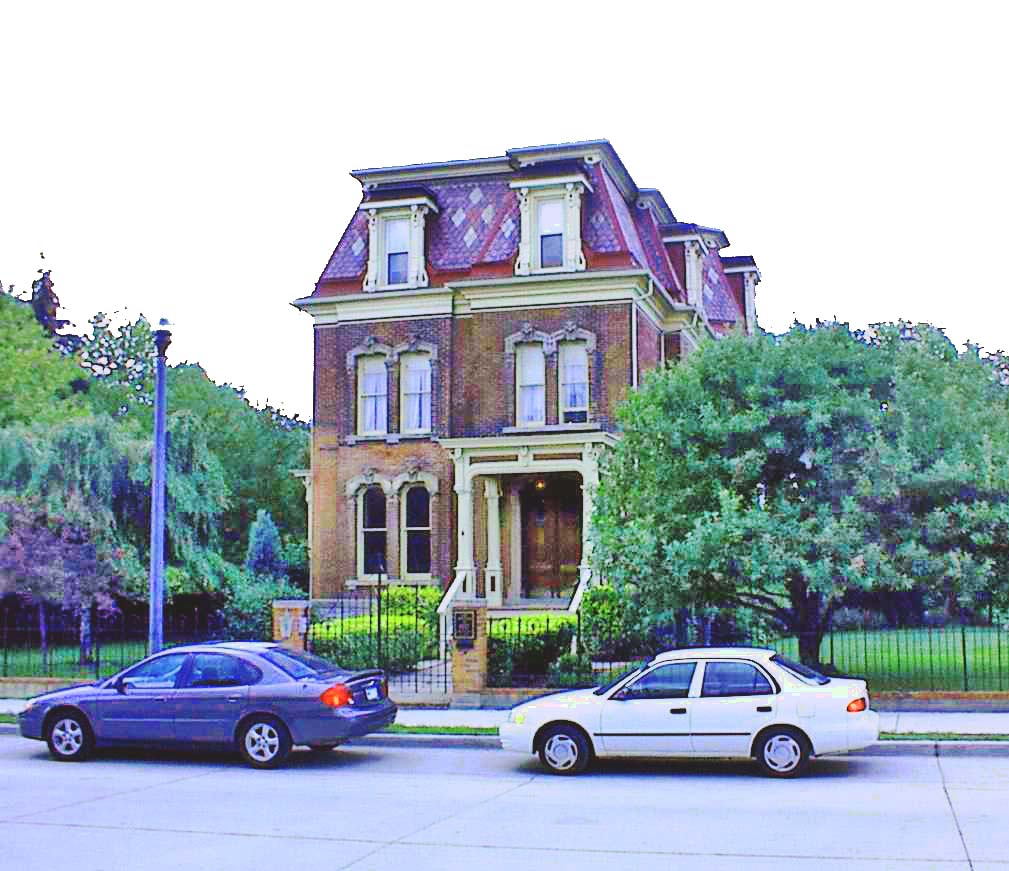
The Hudson-Evans Home/Joseph Lothian Hudson House/
Grace Whitney Evans House
79 Alfred Street in Detroit's Brush Park
Jose Camillo Vegara has frequently used
a dramatic picture of the dilapidated Ransom
Gyllis Home at the corner
of Alfred and
John R to illustrate Detroit's—and the nation's—disregard of its
rich architectural history. His pictures of the Gyllis Home are excellent
and thought provoking. However, if Jose Vegara had walked just 75 feet to
the west on Alfred, he would have seen the Hudson-Evans House, a tremendous
and convincing example of how elegant older homes in Detroit may be restored
and used for financially successful enterprises in the Twentieth-first century.
I wish Vegara had pictured simultaneously both the Random Gyllis Home and
the Hudson-Evans residence.
This home illustrates the residential architectural
preferences of those who became very prosperous in the first decade of Detroit's
emergence as a national manufacturing center. It is a Second Empire home
of
three stories built with attractive red brick. This mansion was built upon
a coarsed, rough-cut stone foundation, as was common in that era. It is
basically
rectangular, but as you look at this home from its Alfred Street front you
will see several projecting bays as well as bay windows, thus minimizing
the
rectangularity. Typical of elegant Second Empire homes, there is a Mansard
roof constructed with decorative slate. You will also see numerous arched
moldings around the many windows. Apparently, the porch was added after the
home was constructed.
A prosperous individual living in a modern American city in the decade after the Civil War needed a place for horses and the vehicles they drew. A carriage house was built in the same architectural style on this property.
Second Empire refers to an eclectic style of architecture popular in France during the reign of Emperor Napoleon III who ruled Gaul from about 1852 to 1870. The Ecole des Beaux-Arts promoted this style with its high roofs, lucarnes at the roofline—not dormers—and opulent ornamentation. The Second Empire style was widely appreciated and frequently used in the United States in the late Nineteenth Century. In the Hudson-Evans Home, you will see the elegant and prominent windows and the attractive Mansard roof.
This structure was built for Grace Whitney Evans, a daughter of Detroit's most well known lumber baron, David Whitney, whose castle-like home is located just a mile northwest on Woodward. Evans later rented this mansion to Joseph L. Hudson who founded the Detroit department store chain that bore his name for almost a century.
Date of construction: 1872
Style of architecture: Second Empire with Italianate influences
Architect: Unknown to me
Use in 2003: This home has been refurbished to its former glory although I
am not sure that its current appearance is the same as its original appearance
in 1872. It is now used as the office of a Detroit law firm
National Registry of Historic Sites: Building # 75000966, Listed: March 5,
1975
State Registry of Historic Sites: P25141 Listed: November 15, 1973